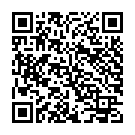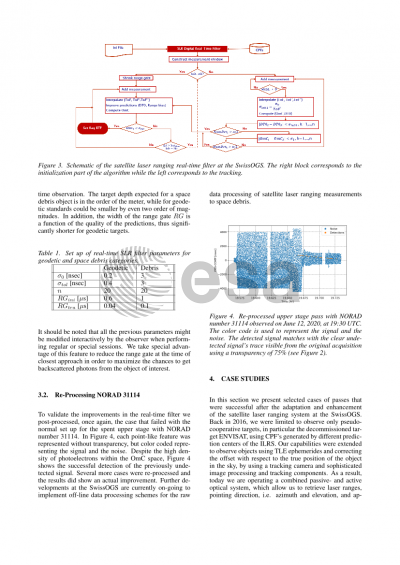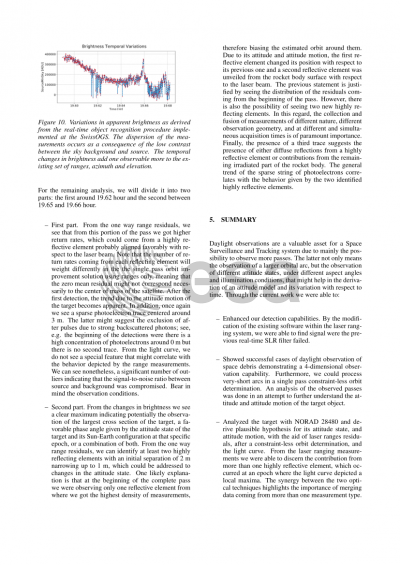Document details

Abstract
The Swiss Optical Ground Station Zimmerwald (SwissOGS), operated by the University of Bern, Switzerland, has extended its capabilities for enabling laser ranging measurements to space debris. Starting in 2012, the SwissOGS successfully participated in multistatic experiments with other European partners as a passive receiver of the diffusely reflected photons for a decommissioned satellite and a spent upper stage. Next, in 2016 laser ranges gathered for the decommissioned satellite ENVISAT were processed and analysed in order to understand and derive an attitude model and its evolution with respect to time.
Recent developments in hardware include the use of a tracking camera, for correcting the pointing of the telescope in real-time, when using ephemerides with compromised accuracy. The tracking camera is equipped with additional spectral filters to block radiation coming from the background, in particular from the daylight sky, and from the backscattered photons of the emitted laser pulses. The implementation of an iris in the focal plane of the receiver path allows to reduce the field of view up to a minimum of 10 arcseconds. Furthermore, a combination of a Fabry-Pérot and a narrowband filter is inserted in the optical path of the receiver, to ensure that only photons in the narrow ranges of 532 ± 0.1 and 1064 ± 0.1 nm wavelengths, centered on the wavelengths of our laser, may pass on to the receiver.
The software used to control all laser observations was adapted to include a new group of targets namely space debris. Since the initial software design was done to comply with precise geodetic standards, we needed to modify certain parameters in the digital real-time filter, to discriminate actual photons backscattered by the target object from the background. Moreover, we did a careful selection of potential targets according to the minimum observable optical cross-section as a function of altitude, minimum expected return flux in the receiver, attitude and reflectivity of the surfaces of the target.
We will present our very first experiences in the observation of space debris using a low-power geodetic laser, highlighting the successful observations from passes during daytime.
Preview









